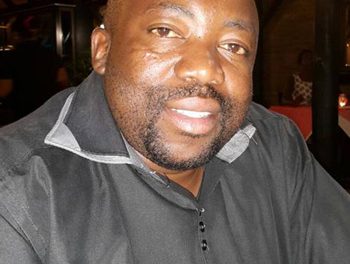
Innovation 30 January 2015
![]() In the previous delivery I made the case that nobody succeeds without experiencing the disappointment that comes with failure, and that learning to fail better is essential for organisations wanting to succeed better in innovation. In this article, I argue that organisations should not only learn from failure, but they should learn to fail intelligently as a deliberate strategy to promote innovation and improvement.
In the previous delivery I made the case that nobody succeeds without experiencing the disappointment that comes with failure, and that learning to fail better is essential for organisations wanting to succeed better in innovation. In this article, I argue that organisations should not only learn from failure, but they should learn to fail intelligently as a deliberate strategy to promote innovation and improvement.
Put failure to work.
Failure is deviation from expected and desired results. The idea that organisations should learn from failure has considerable popular support and even seems obvious, yet organisations that systematically learn from failure are rare. Although numerous prior writings have advocated learning from failure, there is little advice as to how to overcome barriers to making this happen, so I turned to research to investigate this phenomenon. Forerunners in the research of learning from organisational failure, Cannon and Edmondson, have worked together for a number of years to conceptualize and develop recommendations for how to enable organisational learning from failure, and this article is based on their research. Their findings is based on investigating the barriers to learning from failure, which is the fact organisational structures, policies and procedures, along with senior management behaviour, can discourage people from identifying and analyzing failures and from experimenting.
Many organisational cultures have little tolerance for and punish failure. However, they concluded that organisational learning from failure is indeed feasible, but that it involves skilful management of three distinct but interrelated processes: (1) identifying failure, (2) analyzing failure, and (3) deliberate experimentation, presented in order of increasing challenge – both organisationally and in terms of the technical and interpersonal skills required. So let me briefly touch on these three processes. Identifying failure. Proactive and timely identification of failures is an essential first step in the process of learning from them.
The tendency to ignore failure can allow failures to be repeated, developing a smaller failure into a bigger one. Creating an environment in which people have an incentive or at least do not have a disincentive to identify and reveal failures is the job of leadership. Analyzing failure. It hardly needs to be said that organisations cannot learn from failures if people do not discuss and analyze them. Yet this remains an important insight. The learning that is potentially available may not be realized unless thoughtful analysis and discussion of failure occurs. Conducting an analysis of a failure requires a spirit of inquiry and openness, patience and a tolerance for ambiguity. Deliberate experimentation.
By devoting some portion of their energy to trying new things, to find out what might work and what will not, organisations certainly run the risk of increasing the frequency of failure. But they also open up the possibility of generating novel solutions to problems and new ideas for products, services and innovations. In this way, new ideas are put to the test, but in a controlled context.
Next Time
Organisational learning from failure is thus not impossible but rather is counter-normative and often counter-intuitive. Research suggest that making this process more common requires breaking it down into essential activities of identifying failure, analyzing failure, and experimenting, in which individuals and groups can engage. Leaders can draw on this conceptual foundation as they seize opportunities, craft skills, and build routines, structures, and incentives to help their organisations enact these learning processes. Reframing failure from something associated with shame and weakness to something associated with risk, uncertainty and improvement is a critical first step on the innovation journey. Next time I will dwell deeper into failing “intelligently”, i.e. risk management. I conclude with a quote from Samuel Beckett, as can be seen tattooed on the tennis player, Stanislas Wawrinka’s, arm: “Ever tried. Ever failed. No matter. Try Again. Fail again. Fail better”.
Sources: Cannon, M. D., & Edmondson, A. C. (2005). Failing to learn and learning to fail. Long Range Planning, 38(3), 299-319.












































